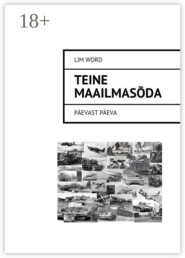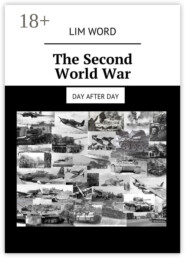По всем вопросам обращайтесь на: info@litportal.ru
(©) 2003-2024.
✖
The Settlement Agreement. Make a repost
Настройки чтения
Размер шрифта
Высота строк
Поля
Instead of developing a clear dialogue, the secretary of the local regional committee simply reads from the balcony the appeal of the Central Committee of the CPSU, published earlier in the press.
The crowd is sent to the center of Novocherkassk, relatively freely bypassing the tanks on the road. General M. Shaposhnikov refuses to use the armored cars of his units against the workers. Moreover, he orders the motorized rifles to discharge the carbines and machine guns, hand over ammunition. This decision allows him to keep a good name, the lives of thousands of people, but (three years later, after writing letters to Soviet writers, Komsomol committees and rectors of universities) helps to leave his post.
A chain of soldiers of Internal Troops (VV) with automatic weapons is built near the building of the city party committee. Someone Azizov opens fire, and kills the first worker. To the place or not, but note that in Central Russia, the military units are usually equipped with draftees from the so-called southern national republics (or, generally speaking, without any nationality). It is easier to suppress protests of the “state-forming people”. The first volley is directed over the heads – but so, under the bullets, the children from the orphanage are sitting on the trees. Shaken by childish shouts, the crowd rushes forward, under gunfire, but, unable to withstand the dense fire, dissipates. According to official figures, 26 people die. Another 11 participants in the riots, even if they were just in the front ranks of people’s demonstrators, are identified by the KGB on operational video materials, and are shot later.
…Khrushchev loves corn. This crop is really, very fruitful and useful. However, even after the Secretary’s report “On the cult of personality” in 1956, the complex of the authoritarian System, in all its most dangerous metastases, is not exhausted. Objection to the Chief, somehow humanly discourse with him is still dangerous – although now it is not your life, but only your position. The main thing here, perhaps, is thoughtless imitation. So, “just in case”, without going into significant details, the leaders on the ground bring the idea of the First Secretary to the utter absurdity. Almost all available acreage is populated by the “Queen of the Fields”, up to and including the territories of the Far North.
All this, at last, bores everyone. The murmur of the people, albeit with an unacceptable, painful delay, is translated into more or less distinct actions of influential functionaries. In 1964, the rest of the rest in Pitsunda NS Khrushchev Presidium of the Supreme Council removed from power. The idea is like this, “just in case” to arrange for the former general secretary of a car accident, a new, not so carnivorous, more collegiate leadership, deviates. At least this time the Central Committee preserves the face before its citizens and the international community. Nikita Sergeyevich lives in the country, under house arrest, grows gorgeous tomatoes, and listens on the radio Voice of America. In 1971, he peacefully dies from cardiac arrest.
Private life. He is married three times, six children. The first son, a fighter pilot on the Yak-7, a senior lieutenant, dies in aerial combat (Kaluga region, 1943).
…Anyway, Khrushchev is a step forward in comparison with Stalin. Everything, as we know, should be judged solely by the fruits. Arguments in the style: “But, after all, I wanted something different, special circumstances emerged” – in the calculation, they are justly not accepted. At the First Secretary people (here and there) receive a small amount of useful proteins and vitamins. Stalin, after only three years after a satisfying, and even prosperous NEP, kills at least 4 million people with mass migrations, famine, and, after another five-year period (peak of repression) – a million, with bullets and torture, in the camps and cellars of the NKVD. We do not know what else Joseph could think of at the end of the sixties, so as to amuse his old age, he remains alive. Under Khrushchev, there is no war (suppression of the Hungarian fascists in 1956 does not count) – with Dzhugashvili there are four of them (including the Korean one, already balancing on the verge of nuclear confrontation). Nikita Sergeyevich admits the death of several dozen people in Novocherkassk – under Joseph Vissarionovich, the scope of peasant uprisings (1929—1932) reaches the scale of the second civil war.
Third Secretary General – Leonid Brezhnev is the next small step towards the well-being of the USSR and even, perhaps, of all mankind.
Workers as leaders: Ivan Likhachev, Andrei Stakhanov
Ivan Likhachev
The very first Soviet truck
ZIS-5, the legendary domestic truck
Ivan Likhachev. Birth – 1896, with. Ozers of the Tula region… The end of the village school, work as a mechanic at the Putilov factory… during the First World War – a service by a sailor in the Baltic Fleet. From 1917 to 1921 years. Likhachev is a commander in parts of the Red Army, and even an employee of the Cheka. Further – studying at the Mining Academy and the Leningrad Electromechanical Institute. Getting too many, not always applicable in practice, knowledge will upset the future People’s Commissar. He leaves the university and, at the behest of the Communist Party, heads the Moscow Automobile Plant (1926). The plant was founded in 1916, before the final establishment of the Soviet government, it was able to produce about 1,300 Fiat cars. The first achievement of MAZ in the USSR – the release in November 1924 of ten one-and-a-half truck AMO-F-15. It is interesting that the conveyor “American”, even with the delivery of Soviets from across the ocean, costs ten times cheaper than it, manufactured on the stalks of the domestic analogue.
From a small and poorly equipped enterprise, in fact – large repair shops, the 30-year-old director creates an auto giant very quickly. Ivan visits the factories of Henry Ford in America, buys Buick, brings it to the capital, sorts it out in parts, introduces many technological innovations to the ZIS (since 1931 – the Stalin Plant). In the same year, based on the American Autocar-5S, AMO-3 was created, the first full-sized truck in the USSR. Likhachev personally participates in the Moscow-Leningrad motor rally. In 1934 the volume of output of cars of various modifications reaches 100 000 per year.
In 1939, Likhachyov was appointed a People’s Commissar of the average industry of the USSR. What is going wrong is not so with scrupulous “execution of government decisions” for “part of compliance with the discipline” in production, and Ivan Alekseevich returned to the plant. The main idea of the automaker is “initiative from below at all levels”. The output of cars reaches 150,000 per year. In October, the plant is evacuated to the Urals, where several powerful high-tech enterprises of various profiles are created on its basis.
An important achievement (in the opinion of the author) – in 1951 the ZIL company organizes the production of quality refrigerators for the widest masses of the population of the USSR.
And, of course, a dubious model of cooperation is the creation, on the basis of documentation, and by Soviet workers, of the Automobile Plant No. 1 in China (1953). Later this, given by the USSR just like that, “to strengthen friendship” the company gets the name First Automobile Works (FAW), and to this day remains the leader of the automobile industry of the Celestial Empire.
…The last Soviet truck – ZIL-4331, out of a total volume of 1.6 million, is manufactured by the plant already on the verge of the collapse of the USSR. In 2016, the Moscow Administration decides to abandon production, destroy the remaining buildings, and use the liberated large areas for the construction of elite residential complexes.
…In the years 1953—1956. Likhachev – Minister of Road Transport and Highways of the USSR. He does not retire, and leaves this world in June 1956. The Moscow Automobile Plant (MAZ, the former ZIS, and the “Pietro Ferrero Plant”) receives the name of ID Likhachev (ZIL).
Private life. His wife is Anna, and her only daughter. Hobbies are a passionate football fan.
Andrey Stakhanov
Andrey Stakhanov. Birth – 1905, etc. Lugovaya, Orel region (the neighborhood of the city of Orel) … work as a shepherd, then, at the mine “Central-Irmino” in the Lugansk region as a horse-breeder, and a “classic” miner. The head of the mine, in order to avoid accusations of wrecking, need a loud success. In order to avoid raising the norms of production (therefore, adjusting the ratio “the amount of coal mined – the money earned”), the miners refuse to take part in the action. All except Aleksey Stakhanov, enthusiastically accepted, and even developed the ideas of the party organizer of the mine Konstantin Petrov. On the night of August 1, 1935, Stakhanov “picks up” 102 tons of coal, instead of 7 tons, thereby raising labor productivity 14 times. The basis of the record is the scrupulous preparation of the work of the only “champion”; the preparation of arch fasteners, the stabilization of pressure in the jackhammer (due to the suspension of the rest), the organization of sufficient lighting, etc. In addition, starting from this case, a “progressive” payment system is used. Now all the coal is attributed to the slaughterer himself, and the work of his assistants – skilled stitchers passes through a separate graph. Stakhanov receives 220 rubles, instead of the usual for a miner 25—30. There is no information about the earnings of his two companions.
…Alexei conducts high-ranking officials to the house, with applause and flowers, and then he remains, together with his cousin Evdokia (gypsy), facing a direct threat of physical destruction. At night they burst into the door. Yevdokia hides her husband in the basement, grabs a knife, and promises to deliver accurate punches to the first one who will pass the threshold… The dust of Aleksei’s “buddies” subsides somewhat.
And, fate leads A. Stakhanov away from gloomy dungeons, to pleasant activities, speeches to collectives of workers and schoolchildren, envelops the ring of protection. Alexei’s wife disappears-she dies from underground abortion, goes to the camp (leaving her children to her husband), is rejected by the leadership as an “incorrect” drummer companion, or something else-we do not know for sure.
…At a school concert, Stakhanov gets acquainted with the 14-year-old Galina. Almost a formal girl… not that she responds to the 30-year-old Hero of Labor with reciprocity, but she does not protest. Parents, caring about the welfare of their daughter, ascribe to her 2 years of life, and marry.
In 1936 the young people moved to Moscow. Stakhanov studies in the Industrial Academy… is elected to the Supreme Soviet of the USSR… lives in the famous House on the Embankment, gets a personal car. The success of the worker is personally monitored by Joseph Stalin (he often invites one to dinner, reviews the lecture notes). He, in fact, becomes the “godfather” of the miner. The journalist makes the mistake of calling Andrei Stakhanov Alexei. The leader declares: “This is a good name… the newspaper” Pravda “can not deceive” and, in the opinion of his pet, not at all interested in, decides to write out the “correct” passport.
Vasiliy Stalin becomes a close friend and drinking companion of Stakhanov. Together they go into steep turns, break Stakhanov’s GAZ M-1, smash the restaurant of the Metropol Hotel, catch the fish in its aquarium, and so on… After all, concerned about his son’s condition, I. Stalin sends the failed Coal Industry Commissar in Karaganda (Kazakhstan), where he becomes the chief of the mine.
In 1943, Alexei Grigorievich returned to Moscow, to the former remarkable apartment (Berestenevskaya embankment). He works in the “sinecure” – the head of the sector of socialist competition, the People’s Commissariat, whose head did not, and especially does not grieve.
In 1957, Khrushchev, for certain reasons, wishing to see Stakhanov closer to real production, calls Alexei into the office, and explains the whole situation. This is in fact necessary for foreign writers who form an opinion on the Country of Soviets. The Hero of Labor does not have to go through silly papers on the table. “After all, I myself am a miner…” Nikita Sergeyevich pronounces, but Stakhanov unceremoniously cuts him off. “What kind of (obscene word) miner!?”.
It’s all. Temporary “reference” is replaced by a lifelong one. The Stakhanov family, from Moscow and a five-room apartment with conveniences, refuses to go for the disgraced head. In Donbass town of Torez Aleksey Grigorievich becomes an assistant to the chief engineer of the mine. The trouble is that Stakhanov can actually no longer work. Salary “Lehe Stakanov” (from the word “glass”) is charged in any case. So a person gets out of a toning-up daily regime, gets out of the circle of fruitful communication, falls into depression and binge. In 1970, Stakhanov was remembered at the very top, sent K.T. Petrov to Torez, the same one who once organized the epoch-making record, with the mission of salvation. Konstantin Grigorievich finds his former protege in the most depressing state, under a fence (worse than you can imagine), laundered and delivers to Moscow. Here the miner is awarded the Order of the Hero of Socialist Labor, amicably welcomes labor collectives, etc., etc.
After take-off follows another failure. Stakhanov goes to a psychiatric hospital. After the last arrival of K. Petrov (1977) follows a short-term remission. The miner comes to his senses, recalls his whole life, says, he says, demands the return of the departed Constantine back.
The next day Stakhanov perishes.
Private life: civil marriage with Evdokia – daughter and son. These children quite happily get on with the second, legitimate wife Galina, and two new sisters. The third marriage is concluded in “exile”, almost accidentally, with some Antonina, and soon canceled.
Morality. In a society where all are formally equal, the information hunger is particularly acute. For the sake of its quenching various kinds of labor “records” are organized. Life is the essence of news. The social order that officially allows stratification, or at least some kind of non-equality of people, experiences considerably less difficulty in preparing tasty information dishes.
In the society of equality, tendencies of thoughtless imitation are strong. Experience, more or less useful in coal mining, is transferred to medicine, science, art (we are obliged to give out more distant teeth, discoveries, productions) and, sadly, the service of state security. Since the beginning of 1937, repressive bodies on the ground compete in the number of people killed, put forward “counter plans” to increase Stalin’s quotas, and so on.
Are workers ready or not prepared to responsibly manage the most important enterprises of the state? The answer in the case of Stakhanov is “No, this threatens them with a nervous breakdown.” But, we also know other examples, here, yes, the sailor Ivan Likhachev (two courses of the Mining Academy), in old workshops created a grandiose automotive production. The result: “OK, and it’s good, but you should be prepared for such a transformation, and always look carefully at your feet.”
Alexei Kosygin, Leonid Brezhnev, Dmitry Ustinov
Alexei Kosygin
Alexei Kosygin. Birth – 1904, St. Petersburg… in 1919—1921, service in the labor units of the Red Army, study at the Petrograd Cooperative Technical School, … the work of the planning department of the Siberian Union of consumer cooperation. In 1930, Alexei Nikolayevich returned to Leningrad, entered the Leningrad Textile Institute (simply – “Rag”) and ended it. Since 1936, he works as a foreman… chief of a factory change, and a year later he becomes director himself.
It can not be said that last year’s student possesses exceptional qualities as a manager, and brilliant charisma, but the field of vacancies was thoroughly cleared by the Great Terror of 1937. Most likely, many of those who perished could eclipse Alexei Kosygin – we will never know that… At that time, as in the central regions of the RSFSR, each functionary is a promoter of some repressed (pulling into the abyss and protégé) statesman, our hero resides in a relatively calm Siberia. Moreover, without a reasonable explanation of the reasons, Kosygin impressed Stalin himself. So, after some swinging, in 1939 Alexei Nikolaevich became People’s Commissar of the textile industry of the USSR. During the war years, he occupies various positions of responsibility, evacuates factories to the Urals (more than 1500 major enterprises), works on “Dear Life” to the besieged Leningrad, etc. In 1948, despite the proximity to people designated “enemies of the people “Kosygin manages to survive the” Leningrad case. “He becomes deputy chairman of the Council of Ministers of the USSR, and also a candidate member of the Politburo of the CPSU (B.). In the summer of 1953, Alexei heads, the Ministry of Food Products Industry, assembled from several ministries, gives this project a move, and returns to its previous post. Already under Brezhnev, in 1964 A. Kosygin became head of the government (yes-yes) of the USSR.
The famous “golden five-year plan” of Kosygin starts. On the one hand, the stock of enthusiasm and spiritual strength of the people has not completely dried up yet. On the other hand, government structures were abandoned by the original revolutionaries; trying at least naively, rudely and awkwardly, but still create a new social order. The situation is reminiscent of how doctors support life in the patient: they change the droppers, monitor the ventilation of the lungs, sometimes even carry them through hospital corridors. Day by day, the same food. So it can last a long time… but, it’s not that. Correctly developing organism struggles with illnesses independently… and grows. For life, a person needs a dream, waiting for tomorrow… at least believing that something very good will happen in his time. The authorities cease to produce even such promises. The self-activity of the people itself is mechanically extinguished in the localities.
Nevertheless, some rational approach to the organization of the economy is bearing fruit. Multiplication of national income reaches 33% per year. Enterprises expand their independence. Part of the profit goes not directly to the state budget, but remains for the development of the enterprise, premiums, and attached schools-kindergartens (so-called “social”). The director can not send the received increase to the pocket only to himself, the adored accountant, the secretary, but to the general salary fund, to arrange the life of workers, a new stadium, or a dining room – please.
The oil and gas producing complex receives a powerful development. In fact, all the infrastructure now used by the oligarchs – “Friends of the Self” – oil rigs, pipelines, roads, cities and towns in Siberia, was created during the times of Alexei Kosygin. However, for many reasons that have not been fully understood, the head of the government can not arrange the export of processed products.
The strength of Alexei Nikolaevich himself is running low. In 1968, he lost an important spiritual support – the wife of Claudia Andreevna. After 6 years, a stroke occurs.
In 1979 A. Kosygin, the only member of the Politburo, simply categorically objected to the introduction of Soviet troops into Afghanistan. But, the former principle of a reasonable Brezhnev collegiality now no longer works. The Chairman has time to make an important contribution to the organization of the Olympic Games in Moscow in 1980, before submitting an application for care in connection with the deterioration of health. A week later, the former head of the Government of the USSR leaves the state dacha, moves to a modest apartment, taking with him only personal belongings and books. Alexei anticipates that now everything will go wrong, the Eleventh Five-Year Plan 1981—1985. will be completely, not at all “golden” – but it can not do anything any more…
Substitutions for A. Kosygin – responsible, business, modest in the way of life… not a drinking statesman, no.
Private life – the only wife, Claudia Andreevna, daughter. Hobby – skiing, canoeing, walking along mountain trails.
Leonid Brezhnev
Leonid Brezhnev. Birth – 1906, with. Kamenskoye (Dneprodzerzhinsk), Ekaterinoslav province (now Dneprovsk region, Ukraine), … working at a butter mill, studying at the Kursk land-reclamation technical school. Until 1929 – L. Brezhnev – surveyor and land surveyor. Further, fate leads him into the power offices, where Leonid Ilich practices the skills of not only land in the posts of deputy chairman of the district executive committee and deputy head of the Ural Land Administration. L. Brezhnev raises the qualification in the universities of Moscow and Dneprodzerzhinsk, serves in the army as an officer-tanker, becomes secretary of the Dnepropetrovsk Regional Committee of the Communist Party of Ukraine. During the Great Patriotic War, the chief of the Political Department of the 18th Army, Colonel Brezhnev, in particular, organized the resistance of Soviet troops on the “Little Earth” bridgehead near Novorossiysk. Recall, the bridgehead is formed on February 4, 1943 as a result of the partially unsuccessful operation of the Red Army to liberate the city of Novorossiysk. The main, sea and air assault forces, due to inadequate fire support, are being retreated, the auxiliary one, using captured weapons, ammunition, etc., seizes the territories later named “Lesser Earth”. Soldiers are building a network of trenches, dugouts, defending a bridgehead for 225 days. Brigade Commissar LI Brezhnev is on the front lines, conducts classes, which now would be called “training for team building” and in general, it shows itself not bad. On June 24, 1945, Major-General Leonid Ilyich took part in the Victory Parade on Red Square.
…According to some sources, Leonid Brezhnev is one of ten armed generals who arrived in the Kremlin for the arrest of L. P. Beria.











